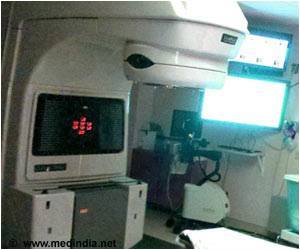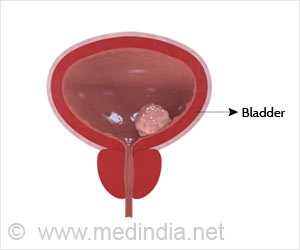A novel class of radiopharmaceuticals can now identify nearly 30 types of malignant tumors accurately, reveals a new study.

‘New radiotracer can identify 28 types of tumors and has potential for therapeutic application in the future.’





The 68Ga-FAPI radiotracer targets cancer-associated fibroblasts, which can contribute up to 90 percent of a tumor's mass. Many cancer-associated fibroblasts differ from normal fibroblasts by their specific expression of the fibroblast activation protein, or FAP. FAP-specific inhibitors were first developed as conventional anticancer drugs; now they have been advanced into tumor-targeting radiopharmaceuticals.In the retrospective study, researchers used PET/CT to image 80 patients with 28 different kinds of cancer, aiming to quantify 68Ga-FAPI uptake in primary, metastatic or recurring cancers. All patients were referred for experimental diagnostics by their treating oncologists because they were facing an unmet diagnostic challenge that could not be solved sufficiently with standard methods. The injected activity for the 68Ga-FAPI examinations was 122-312 MBq, and the PET scans were initiated one hour after injection. Tumor tracer uptake was measured by SUVmean and SUVmax.
All patients tolerated the examination well. As the overall SUV mean, median and range of 68Ga-FAPI in primary tumors and metastatic lesions did not differ significantly, researchers analyzed all results in one group.
The highest average SUVmax (SUVmax >12) was found in sarcoma, esophageal, breast, cholangiocarcinoma and lung cancer. The lowest 68Ga-FAPI uptake (average SUVmax <6) was observed in pheochromocytoma, renal cell, differentiated thyroid, adenoid cystic and gastric cancers.
The average SUVmax of hepatocellular, colorectal, head-neck, ovarian, pancreatic and prostate cancer was intermediate (SUVmax 6-12). In addition, the tumor-to-background ratios were more than three-fold in the intermediate group and more than six-fold in the high-intensity uptake group, resulting in high image contrast and excellent tumor delineation.
Advertisement
In contrast to 18F-FDG PET/CT, 68Ga-FAPI PET/CT can be performed without specific patient preparation such as fasting or recline during uptake time. This is a potential operational advantage for 68Ga-FAPI PET/CT, as it stands to improve patient comfort and accelerate work-flow.
Advertisement
"Cancer associated fibroblasts have been described as immunosuppressive and as conferring resistance to chemotherapy, which makes them attractive targets for combination therapies," he said. "Because the 68Ga-FAPI tracers contain the universal DOTA-chelator, it is possible to label them with therapeutic radionuclides whose half-life fits to the tumor retention time of the carrier molecule. Since the tracer has been observed to accumulate in several important tumor entities, there may be a huge field of therapeutic application to be evaluated in the future."
Source-Eurekalert









